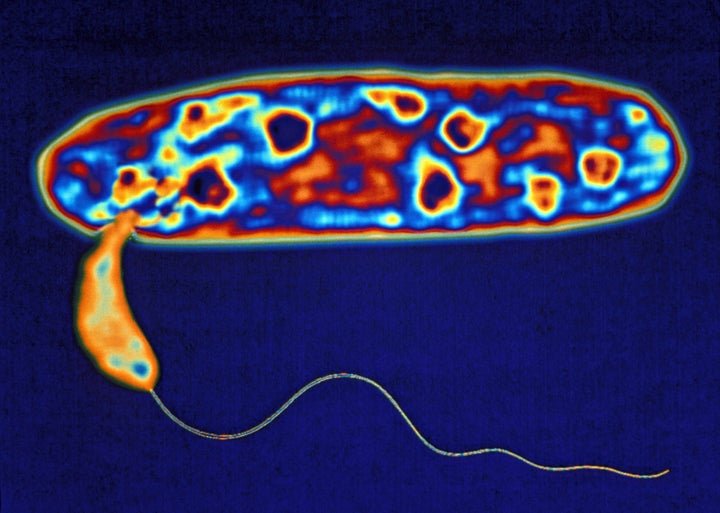Scientists have discovered a novel way to fight deadly superbugs – cannibal bacteria.
A fast-swimming bacterium called Bdellovibrio has been proven to clear potentially lethal infections by devouring bacteria from the inside out.
After feeding, the bacteria replicates and then bursts out of its dead host’s shell, ready to tackle more rogue bacteria.
Researchers set Bdellovibrio loose on Shigella, a common cause of food poisoning that kills more than a million people each year.

Published in Current Biology, the animal studies showed the treatment culled populations of superbugs with no side effects, marking “a research milestone”.
Lab dish tests at the Nottingham University and Imperial College London showed the bacteria caused a Shigella population to dwindle 4,000 fold.
When the bacteria was applied to fish larvae infected with the superbug, the predator increased the survival rate from 25 to 60 per cent.
“It is definitely a creative approach and what is special is the inability of the host to develop resistance,” Dr Serge Moswoty from Imperial told the BBC.
“It’s an important milestone in research into the use of a living antibiotic that could be used in animals and humans.”
The scientists are particularly interested in using the bacteria to treat infected wounds, where it can be easily injected, rather than those which have spread.
But the treatment will have to pass a number of safety checks before it can be administered therapeutically.
Scientists are racing to find new ways to tackle bacteria, as more and more bugs develop resistance to conventional drugs.
In July, scientists in America discovered that cranberries could hold the key to a new generation of antibiotics to tackle drug-resistant superbugs.
The fruit’s natural anti-bacterial properties were shown in lab experiments to block the critical first step in bacterial infections.
